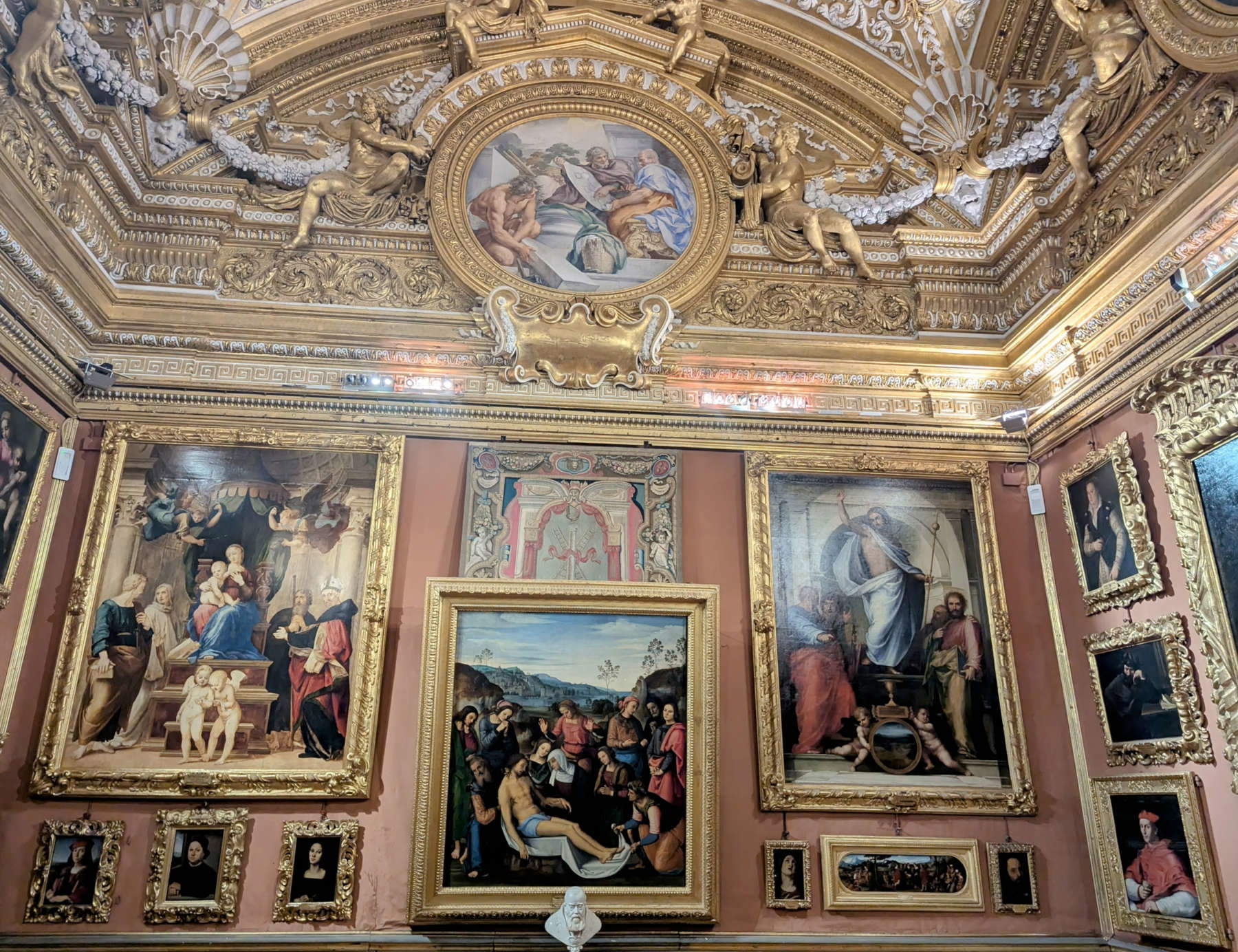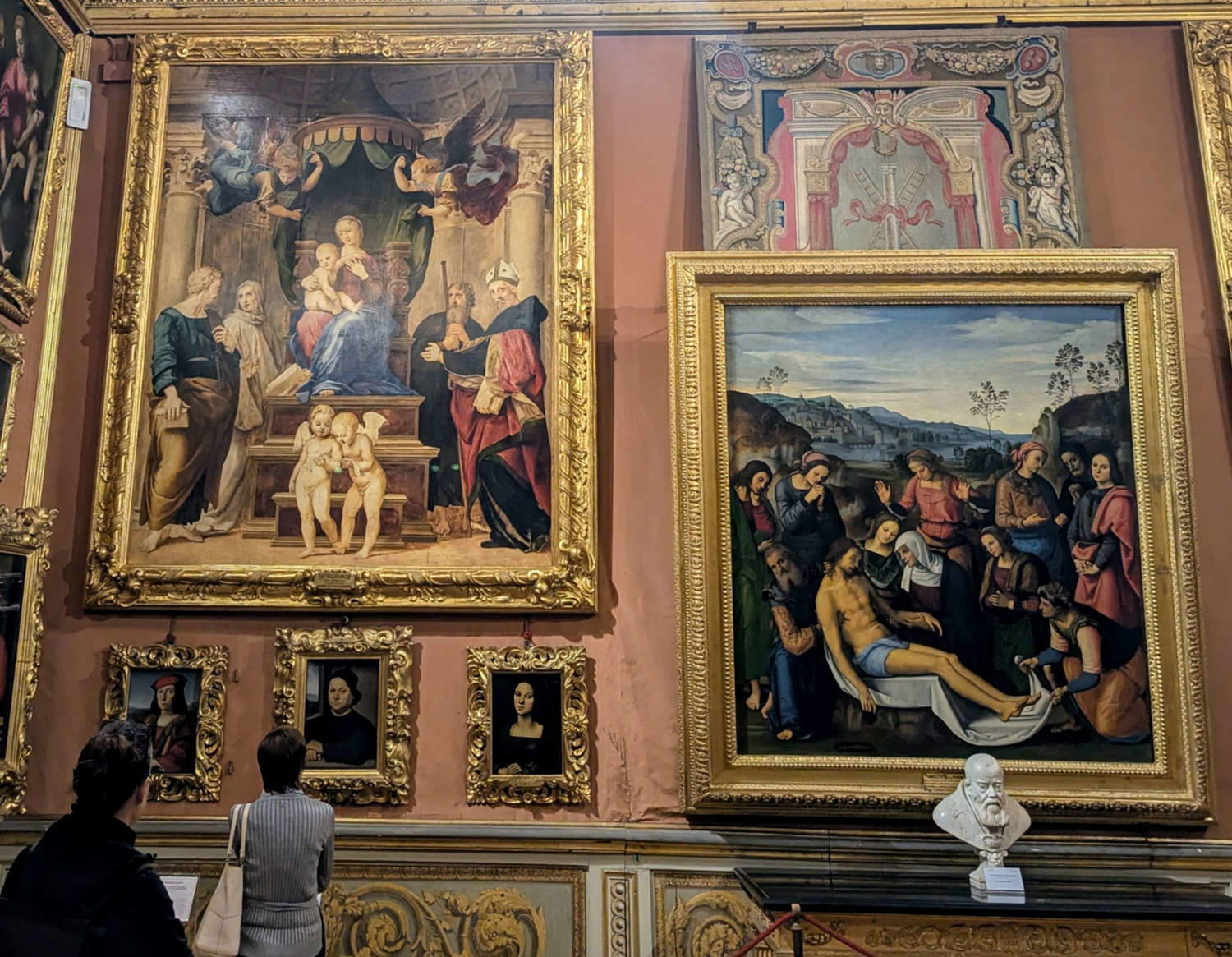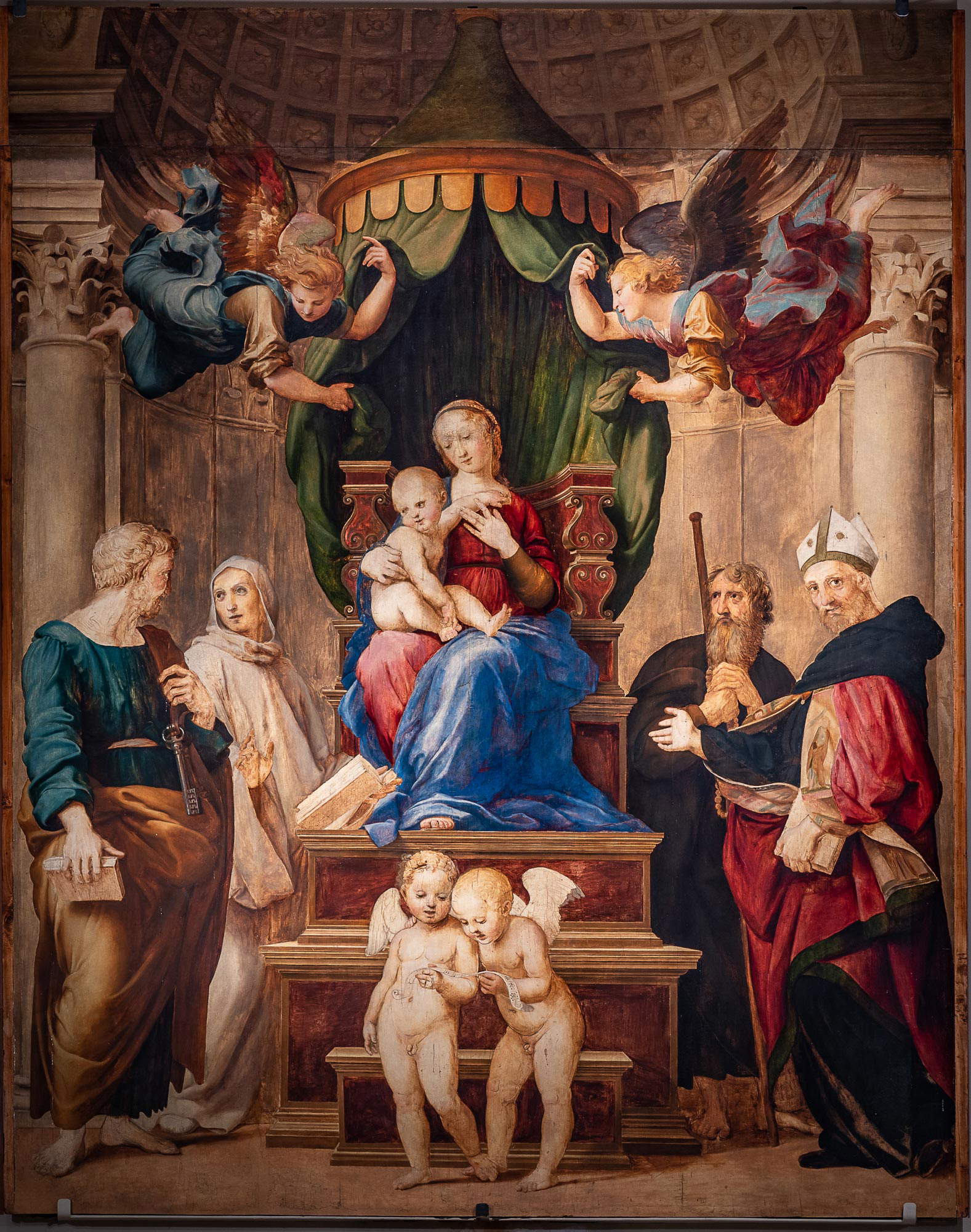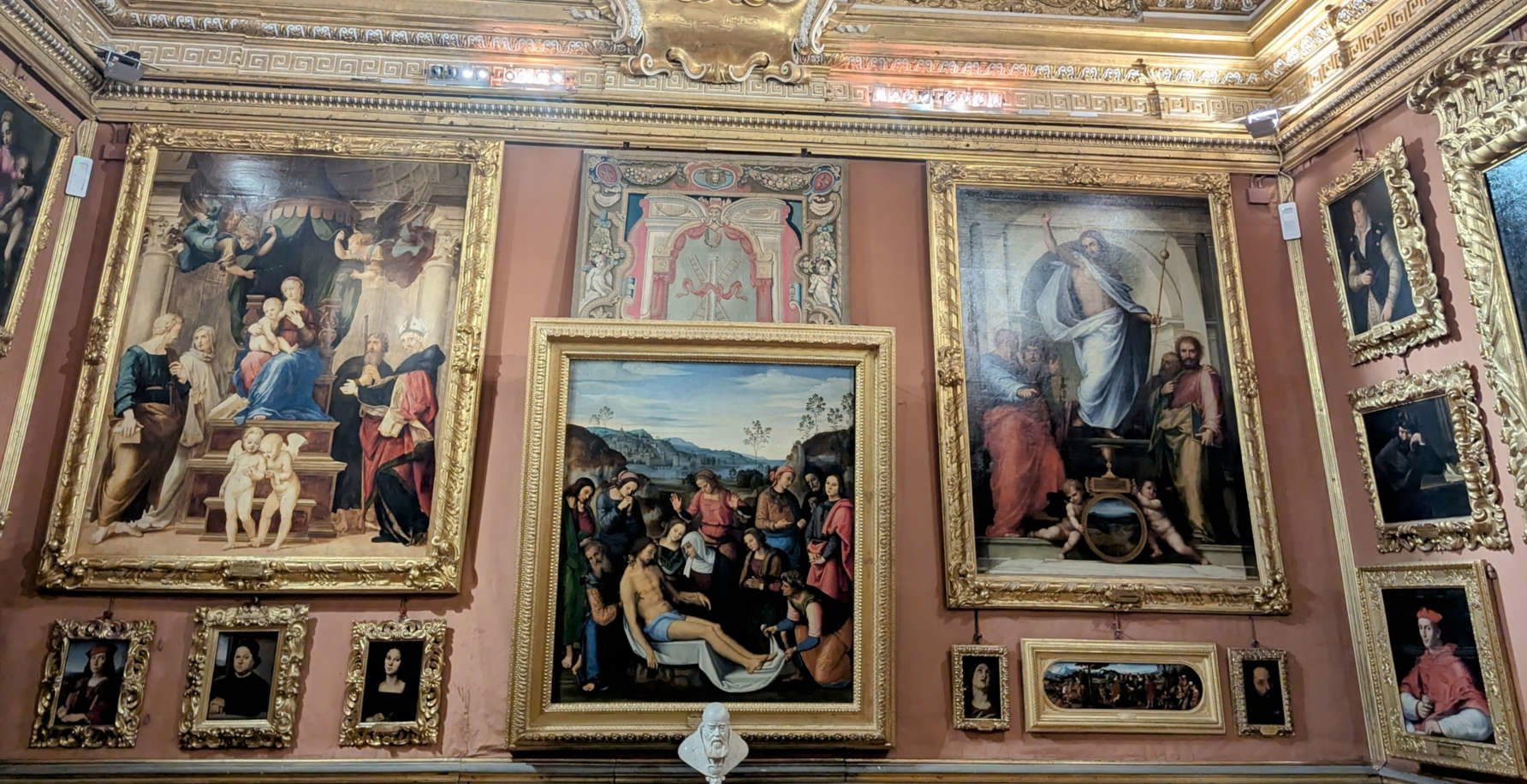Raphael's Madonna of the Canopy returns to the Pitti Palace after a year's absence
After more than a year’s absence, the Madonna del Baldacchino, one of Raphael Sanzio ’s (Urbino, 1483 - Rome, 1520) masterpieces, returns to its Florentine home in the Pitti Palace. The imposing altarpiece, which measures 280x216 cm in its current configuration, can once again be seen in Florence in the Sala di Saturno of the Galleria Palatina, the treasure chest that houses some of the Urbino genius’ most celebrated works, such as the Madonna of the Seat and the Vision of Ezekiel.
The Madonna of the Canopy was on “tour” from May 7 to Oct. 1, 2023 at Pescia Cathedral, in the Turini Chapel, where it had been kept for nearly 150 years between the 16th and 17th centuries. Before and after this exhibition, the work was entrusted to the laboratories of the Opificio delle Pietre Dure in Florence, which carried out a series of in-depth diagnostic analyses of it. Now, restored to its magnificence, it is ready to welcome back Florentine and international visitors. Since the Palatine Gallery opened to the public in 1828, this work has been one of the museum’s most iconic treasures, a presence that reaffirms the link between Florence and the art of Raphael.


The history of the work: between Florence, Pescia and the Medicis
The Madonna del Baldacchino is the only large altarpiece of public use belonging to Raphael’s Florentine period. Commissioned by the Dei family for their chapel in the church of Santo Spirito in Florence, the work was never completed by the artist. In 1508, in fact, Raphael was called to Rome by Pope Julius II to decorate the Vatican apartments (the famous Raphael Rooms), thus leaving the altarpiece unfinished.
Left unused, in 1522 it was replaced in the church of Santo Spirito by Rosso Fiorentino’s Sacred Conversation, also now on display in the Pitti Palace. Around 1513, the Madonna del Baldacchino was purchased by Baldassarre Turini, secretary to Pope Leo X and a personal friend of Raphael. Turini destined the work for his family’s chapel in Pescia Cathedral, where it remained for about 150 years.
In 1697, the work was purchased by Grand Prince Ferdinando de’ Medici, son of Cosimo III, to enrich the grand ducal collection at Palazzo Pitti. The move was not without tension: the people of Pescia, deeply attached to the image of the Madonna, reacted with heated protests, forcing the painting to be transported at night to avoid further conflict. A copy of the work, made by Pier Dandini, was left in the Turini chapel.
Once in Florence, the painting underwent an adaptation to fit harmoniously into Ferdinando de’ Medici’s apartment. The upper part of the canopy was enlarged by court painter Niccolò Cassana, who added a lacunar canopy inspired by the Pantheon in Rome.

Raphael’s art: harmony and monumentality
The Madonna del Baldacchino is a unique testimony to Raphael’s artistic evolution in his Florentine period, and is distinguished by its measured construction of monumental space, delicacy of expression, and great formal balance. The work shows the influence of great masters such as Leonardo da Vinci, Michelangelo, and Fra Bartolomeo, reinterpreted with a delicacy and balance peculiar to Sanzio.
The composition is dominated by the central figure of the Virgin, holding the Child in her arms, surrounded by saints and cherubs under a monumental canopy. The airiness of space, perspective perfection and sweetness of expression make this altarpiece an absolute masterpiece, capable of blending monumentality and intimacy.
The restoration carried out by the Opificio delle Pietre Dure between 1987 and 1991 and recent investigations, also conducted by the Opificio delle Pietre Dure on the occasion of the “Uffizi Diffusi” initiative, have confirmed that the work was never completed in some of its parts, corroborating Giorgio Vasari’s testimony about its non-completion. Nevertheless, the pictorial quality and compositional harmony demonstrate Raphael’s full control over the subject matter and his artistic maturity.
 |
| Raphael's Madonna of the Canopy returns to the Pitti Palace after a year's absence |
Warning: the translation into English of the original Italian article was created using automatic tools. We undertake to review all articles, but we do not guarantee the total absence of inaccuracies in the translation due to the program. You can find the original by clicking on the ITA button. If you find any mistake,please contact us.





























